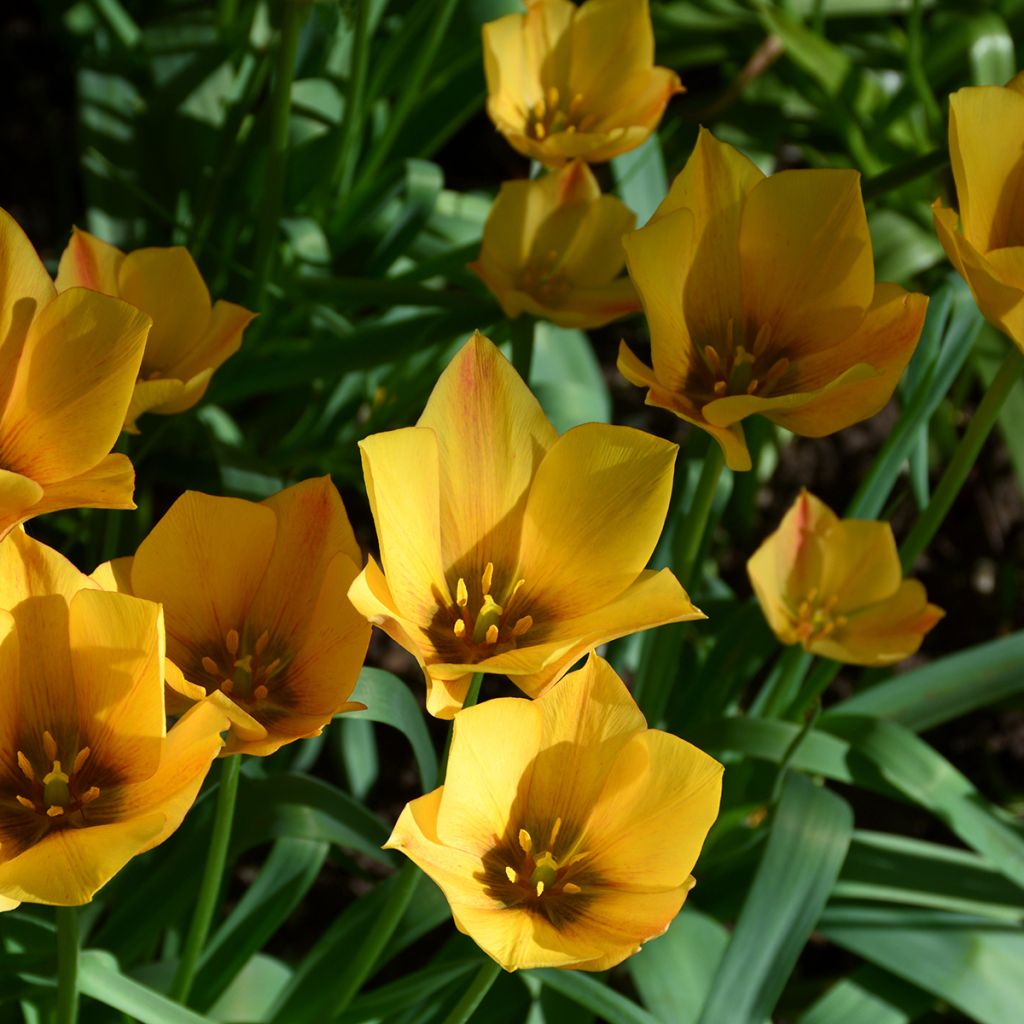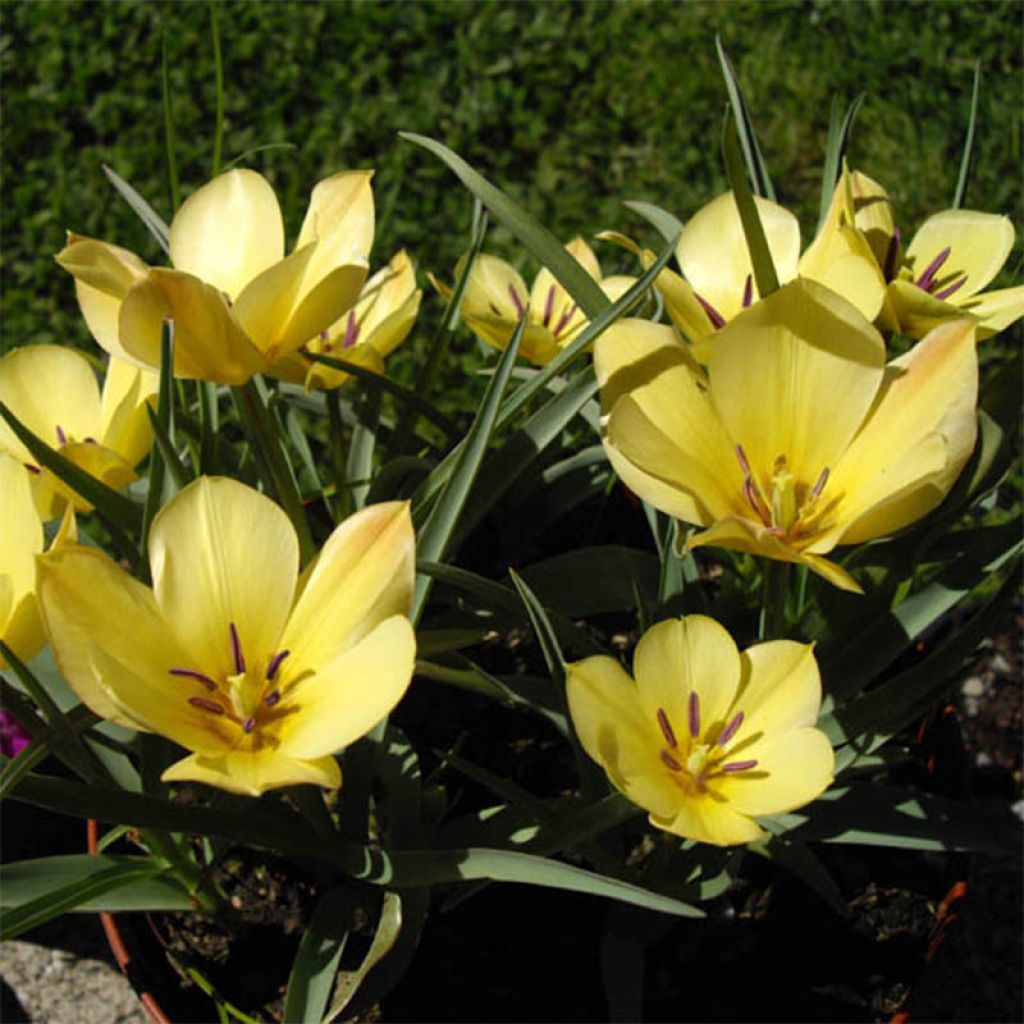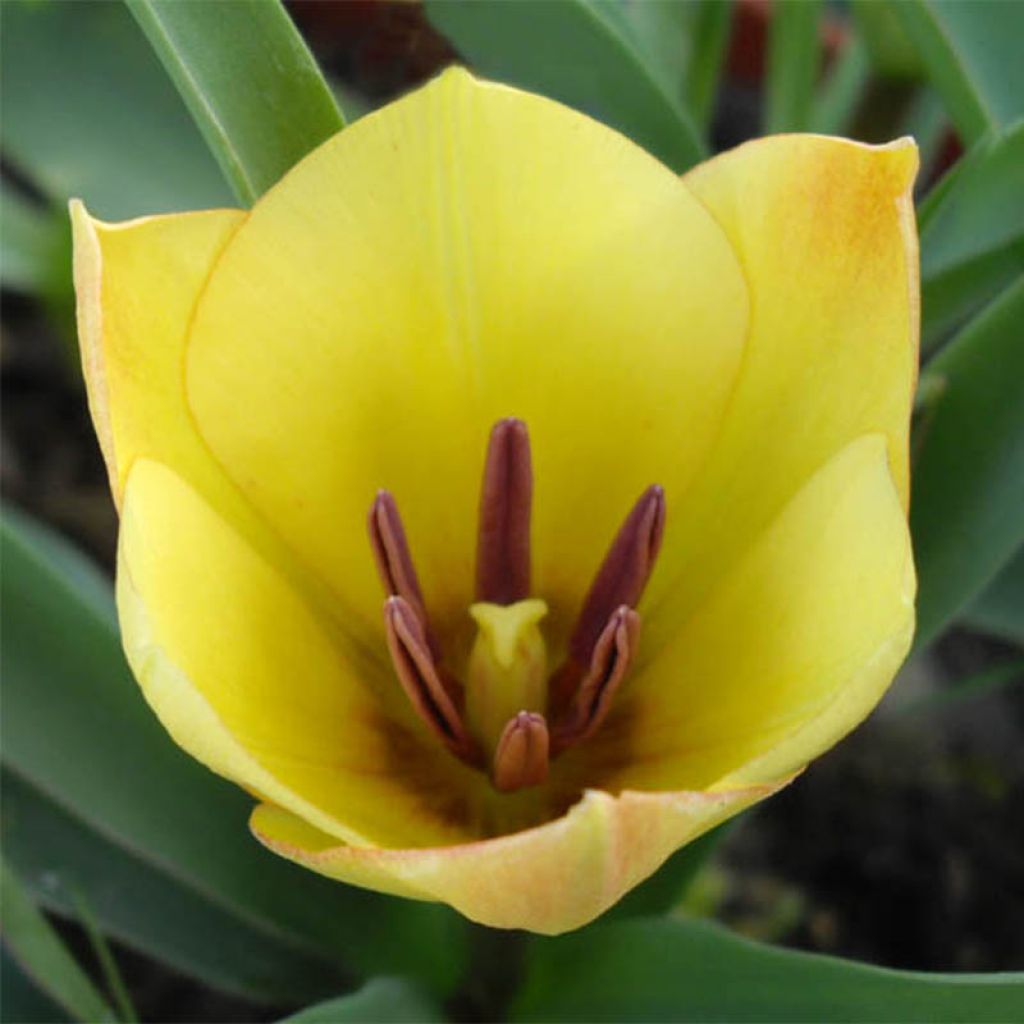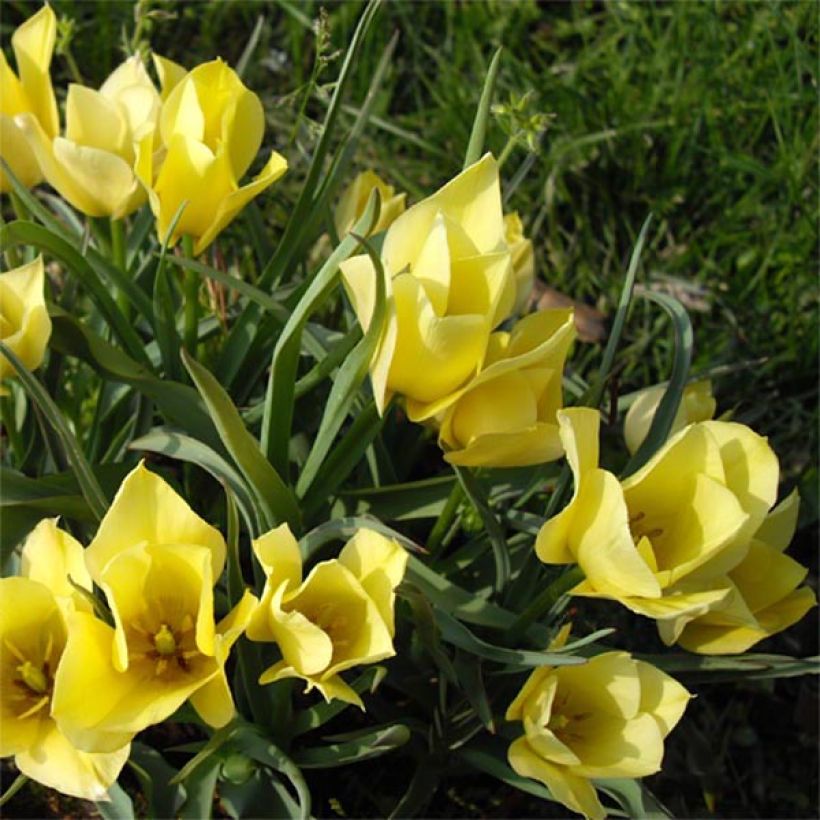

Tulipa linifolia 'Yellow Jewel'


Tulipa linifolia 'Yellow Jewel'


Tulipa linifolia 'Yellow Jewel'
Tulipa linifolia 'Yellow Jewel'
Tulipa linifolia Yellow Jewel
tulip
Planted at the end of October, they all emerged this spring and are forming absolutely adorable little flowers, whose shape reminds one of the crocus. The light green, slender leaves are also remarkable. They appreciate my border with dry and slightly rocky soil, more than the greigii Little Red Riding Hood that I planted in the same spot. Revised Text: Planted at the end of October, they all emerged this spring and are forming absolutely adorable little flowers, reminiscent of crocuses. The light green, slender leaves are also noteworthy. They thrive in my border with dry and slightly rocky soil, more so than the greigii Little Red Riding Hood that I planted in the same location.
Claire, 01/05/2021
This plant carries a 6 months recovery warranty
More information
We guarantee the quality of our plants for a full growing cycle, and will replace at our expense any plant that fails to recover under normal climatic and planting conditions.
From €5.90 for pickup delivery and €6.90 for home delivery
Express home delivery from €8.90.

Does this plant fit my garden?
Set up your Plantfit profile →
Description
Tulipa linifolia (Batalinii Group) 'Yellow Jewel' is a rare form with small, generous, slightly fragrant cups in early spring formed by almond-shaped petals, in iridescent lemon-yellow, shaded with pink, which open widely in the sun to reveal their light red stamens, and close at night. From its Uzbek and mountain origins, it has kept a compact habit and a clear preference for well-drained soil, moist in spring, and dry in summer. This bulbous plant is a long-lasting species, faithfully flowering every year in mid-season and naturalising over time.
Tulipa linifolia (or batalinii) is a perennial bulbous plant belonging to the lily family, which embodies the ancient Turkish ideal of pointed corollas. Its origins can be traced back to the mountains of Central Asia, between Uzbekistan, Kazakhstan, and Tajikistan.
The 'Yellow Jewel' form, commonly associated with botanical species, is rare in cultivation. It stands out with its light yellow colour washed with pink and coppery tones, with green markings at the base of the petals. This small tulip reaches 15 to 18 cm (6 to 7in) high when in bloom in March-April, at the top of a short sturdy stem, with a corolla of 6 silky and pointed tepals that close at night. The flowers emit a light fragrance and its deciduous foliage consists of 4 or 5 sword-shaped, medium green leaves.
Botanical tulips do not degenerate over time like large-flowered tulips. They naturalise, remaining in place for several years without special care and thrive in borders and rockeries. To create colourful scenes, they can be combined with various small bulbs: Crocus, Allium moly, Ipheion uniflorum, Anemone blanda, small-flowered Narcissus, Muscari, Puschkinia, Cyclamen coum, Erythronium pagoda, Leucojum vernum, snowdrops, Scilla sibirica...
Tulip species are found in most of the Old World, from Western Europe to China and Japan, through Eastern Europe, Asia Minor, and Central Asia. Their distribution range also includes North Africa and the Indian subcontinent. The centre of diversity for the genus is in the Pamir and Hindu Kush mountains and the steppes of Kazakhstan.
There are various wild species, many of which are endangered. They are either tulips originally from cultivated fields, such as the Tulipa agenensis, or small tulips found in wooded areas or among rocks in the mountains. In cultivation, these are called "botanical tulips".
Report an error about the product description
Tulipa linifolia 'Yellow Jewel' in pictures


Plant habit
Flowering
Foliage
Botanical data
Tulipa
linifolia
Yellow Jewel
Liliaceae
tulip
Cultivar or hybrid
Planting and care
Plant Tulipa batalinii bulbs in autumn, from September to December, at a depth of 10 cm (4in), 10 cm (4in) apart in ordinary, slightly acidic, neutral, or slightly chalky, loose, well-worked, and above all well-draining soil. If necessary, incorporate coarse sand or gravel into the planting soil, as botanical tulips are sensitive to wet winters and summers in heavy, waterlogged soils. Never add poorly decomposed manure or compost to the planting soil, as this could cause the bulbs to rot. Tulips will thrive in moist to dry soil, in a sunny or semi-shady location in warm climates. After flowering, their foliage becomes unsightly, so we recommend planting Heucheras, Tiarellas, Brunneras, Bleeding Hearts or Euphorbia Cyparissias, at the forefront of your flowerbeds. Their foliage will enhance the colours of your tulips, and elegantly hide their yellowing leaves.
Planting period
Intended location
Care
-
, onOrder confirmed
Reply from on Promesse de fleurs
Haven't found what you were looking for?
Hardiness is the lowest winter temperature a plant can endure without suffering serious damage or even dying. However, hardiness is affected by location (a sheltered area, such as a patio), protection (winter cover) and soil type (hardiness is improved by well-drained soil).

Photo Sharing Terms & Conditions
In order to encourage gardeners to interact and share their experiences, Promesse de fleurs offers various media enabling content to be uploaded onto its Site - in particular via the ‘Photo sharing’ module.
The User agrees to refrain from:
- Posting any content that is illegal, prejudicial, insulting, racist, inciteful to hatred, revisionist, contrary to public decency, that infringes on privacy or on the privacy rights of third parties, in particular the publicity rights of persons and goods, intellectual property rights, or the right to privacy.
- Submitting content on behalf of a third party;
- Impersonate the identity of a third party and/or publish any personal information about a third party;
In general, the User undertakes to refrain from any unethical behaviour.
All Content (in particular text, comments, files, images, photos, videos, creative works, etc.), which may be subject to property or intellectual property rights, image or other private rights, shall remain the property of the User, subject to the limited rights granted by the terms of the licence granted by Promesse de fleurs as stated below. Users are at liberty to publish or not to publish such Content on the Site, notably via the ‘Photo Sharing’ facility, and accept that this Content shall be made public and freely accessible, notably on the Internet.
Users further acknowledge, undertake to have ,and guarantee that they hold all necessary rights and permissions to publish such material on the Site, in particular with regard to the legislation in force pertaining to any privacy, property, intellectual property, image, or contractual rights, or rights of any other nature. By publishing such Content on the Site, Users acknowledge accepting full liability as publishers of the Content within the meaning of the law, and grant Promesse de fleurs, free of charge, an inclusive, worldwide licence for the said Content for the entire duration of its publication, including all reproduction, representation, up/downloading, displaying, performing, transmission, and storage rights.
Users also grant permission for their name to be linked to the Content and accept that this link may not always be made available.
By engaging in posting material, Users consent to their Content becoming automatically accessible on the Internet, in particular on other sites and/or blogs and/or web pages of the Promesse de fleurs site, including in particular social pages and the Promesse de fleurs catalogue.
Users may secure the removal of entrusted content free of charge by issuing a simple request via our contact form.
The flowering period indicated on our website applies to countries and regions located in USDA zone 8 (France, the United Kingdom, Ireland, the Netherlands, etc.)
It will vary according to where you live:
- In zones 9 to 10 (Italy, Spain, Greece, etc.), flowering will occur about 2 to 4 weeks earlier.
- In zones 6 to 7 (Germany, Poland, Slovenia, and lower mountainous regions), flowering will be delayed by 2 to 3 weeks.
- In zone 5 (Central Europe, Scandinavia), blooming will be delayed by 3 to 5 weeks.
In temperate climates, pruning of spring-flowering shrubs (forsythia, spireas, etc.) should be done just after flowering.
Pruning of summer-flowering shrubs (Indian Lilac, Perovskia, etc.) can be done in winter or spring.
In cold regions as well as with frost-sensitive plants, avoid pruning too early when severe frosts may still occur.
The planting period indicated on our website applies to countries and regions located in USDA zone 8 (France, United Kingdom, Ireland, Netherlands).
It will vary according to where you live:
- In Mediterranean zones (Marseille, Madrid, Milan, etc.), autumn and winter are the best planting periods.
- In continental zones (Strasbourg, Munich, Vienna, etc.), delay planting by 2 to 3 weeks in spring and bring it forward by 2 to 4 weeks in autumn.
- In mountainous regions (the Alps, Pyrenees, Carpathians, etc.), it is best to plant in late spring (May-June) or late summer (August-September).
The harvesting period indicated on our website applies to countries and regions in USDA zone 8 (France, England, Ireland, the Netherlands).
In colder areas (Scandinavia, Poland, Austria...) fruit and vegetable harvests are likely to be delayed by 3-4 weeks.
In warmer areas (Italy, Spain, Greece, etc.), harvesting will probably take place earlier, depending on weather conditions.
The sowing periods indicated on our website apply to countries and regions within USDA Zone 8 (France, UK, Ireland, Netherlands).
In colder areas (Scandinavia, Poland, Austria...), delay any outdoor sowing by 3-4 weeks, or sow under glass.
In warmer climes (Italy, Spain, Greece, etc.), bring outdoor sowing forward by a few weeks.


































